“The purpose of using technology is to guide your training plan. In my experience, this means gathering info on kinetic parameters – as you can’t ‘see’ those, they must be measured.”
Runeasi shows you how to become a better runner, in real-time. We guide you through injury to performance via our running gait analysis software, together with our community of sports health providers.

“We need to be cautioned by generalizing cues to everyone. With Runeasi, we can individualize cues and see how the client responds.”
“The purpose of using technology is to guide your training plan. In my experience, this means gathering info on kinetic parameters – as you can’t ‘see’ those, they must be measured.”
“I love Runeasi, a frictionless platform with 10 years of rock-solid research behind it. I held out on getting any tech until I came across this.”
Physical therapist at Motion To Balance,
ACL rehabilitation-expert,
Instructor at Physiotutors
Running biomechanics expert,
Author of ‘Running Rewired’,
Founder of Mobo Board
20+ years of experience helping runners,
Founder of Running Zone Podcast,
Founder of Runwell

Physical therapist at Motion To Balance, ACL-expert
“We need to be cautioned by generalizing cues to everyone. With Runeasi, we can individualize cues and see how the client responds.”
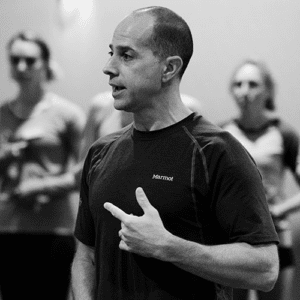
Physical therapist, Running Biomechanics expert.
“The purpose of using technology is to guide your training. In my experience, this means gathering info on kinetic parameters – as you can’t ‘see’ those, they must be measured.”
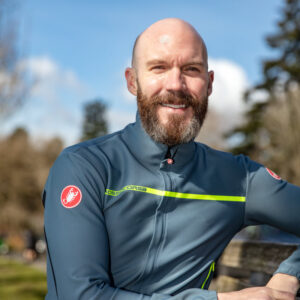
20+ years of experience helping runners, Founder of Running Zone Podcast, Founder of Runwell
“I love Runeasi, a frictionless platform with 10 years of rock-solid research behind it. I held out on getting any tech until I came across this.”
Perform evidence-based running gait assessments using a validated single biomechanics sensor to track the acceleration of your body’s center of mass. Measure your client’s weakest links that are invisible to the naked eye.
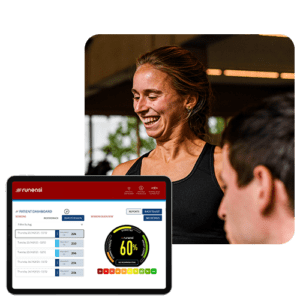
In a finger snap we provide you with personalized training recommendations that will empower you to improve your client’s weakest links. To save you time, we automatically interpret all the metrics in a client-friendly report for you.
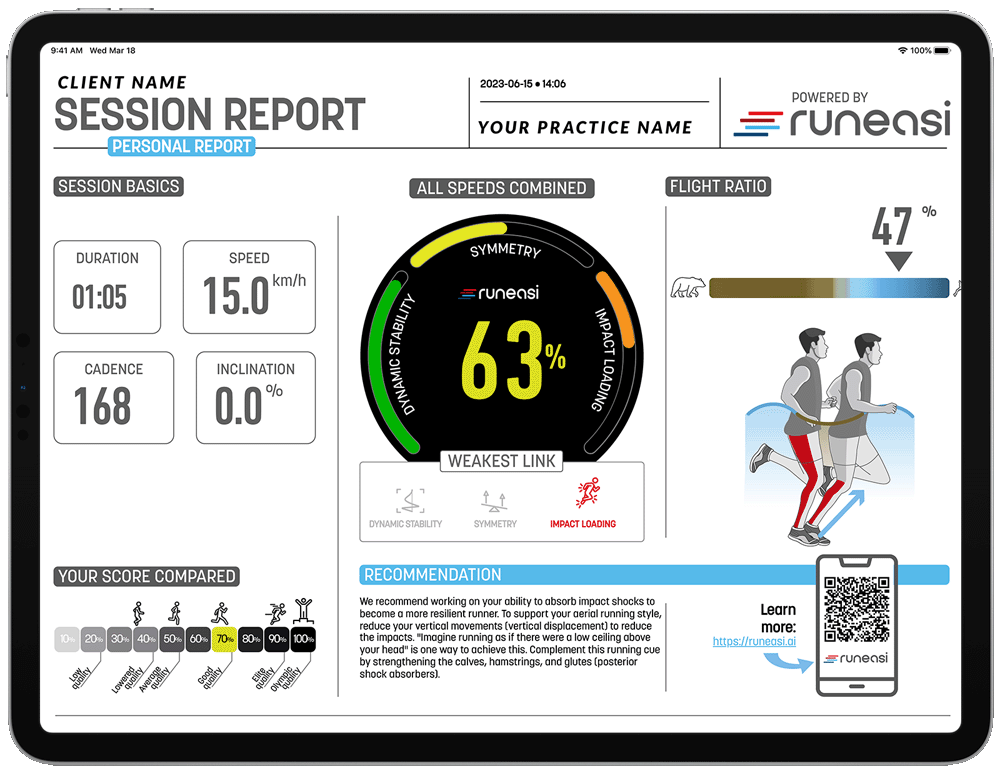
Our technology helps you guide your client’s with a tailor-made exercise program. Get optimal training results with data-driven personalized strategies and to measure progress. Learn how to prescribe gamified biofeedback via our game-changing real-time feedback platform to accelerate neurocognitive learning.
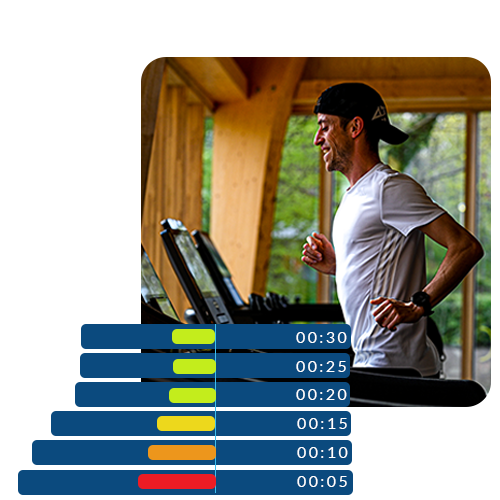
We added an client-friendly interpretation layer to help educate with visuals that are easy to interpret and disseminate. Our one holistic Running Quality Score synthesizes all the most essential biomechanical components and transcribes it as weakest links.
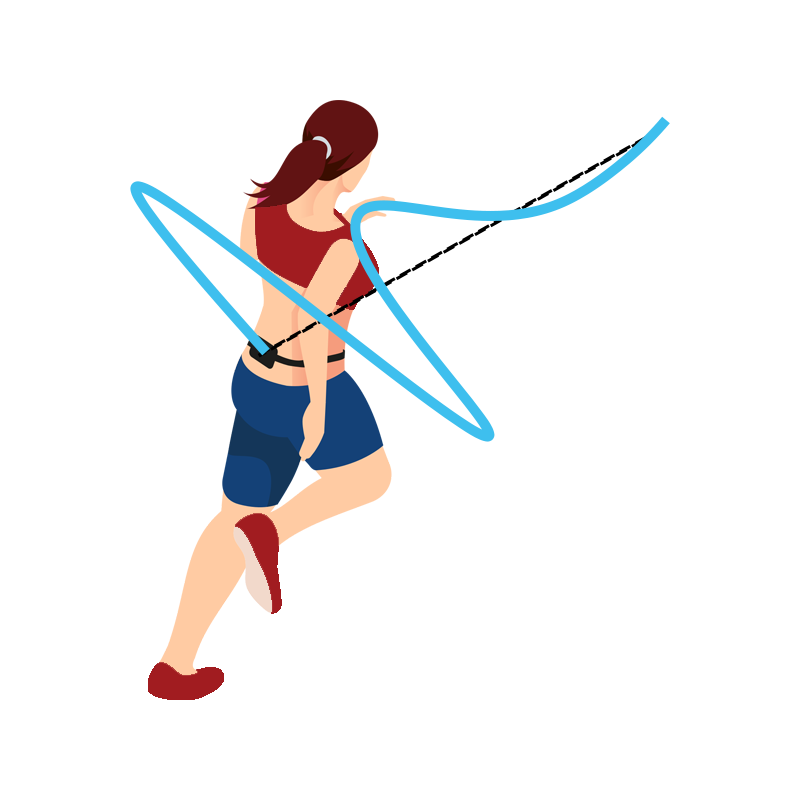
Dynamic instability represents the proportion of hip movement in the medio-lateral direction during ground contact. It captures how much energy is wasted that is not contributing to forward propulsion.
Recent research showed that this parameter is linked to energy cost of running (Schütte 2018) and is an important biomechanical risk-factor in overuse injuries (Pla et al. 2021).
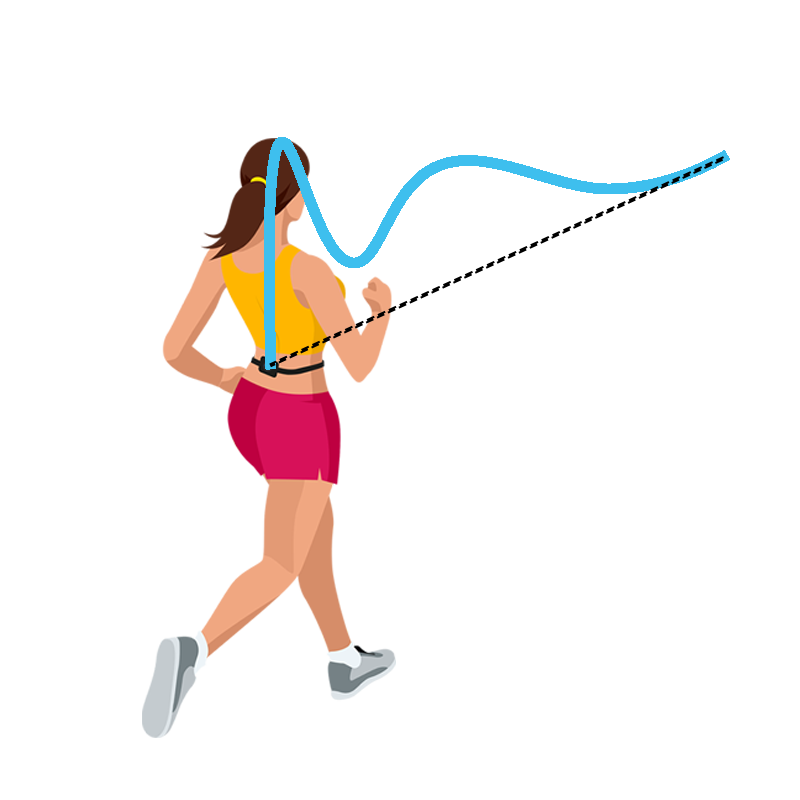
We measure the impact reaching your lower back immediately after the foot hits the ground.
Impact magnitude is the peak value and is the indicator of the global running load. Impact duration is the timing component that indicates the rate of loading. It explains how well the load is absorbed by the lower legs.
Both parameters are strongly linked to patients with running-related injuries (Burke et al. 2022) & are most accurate to measure cumulative impact load (Vanwanseele et al. 2020)
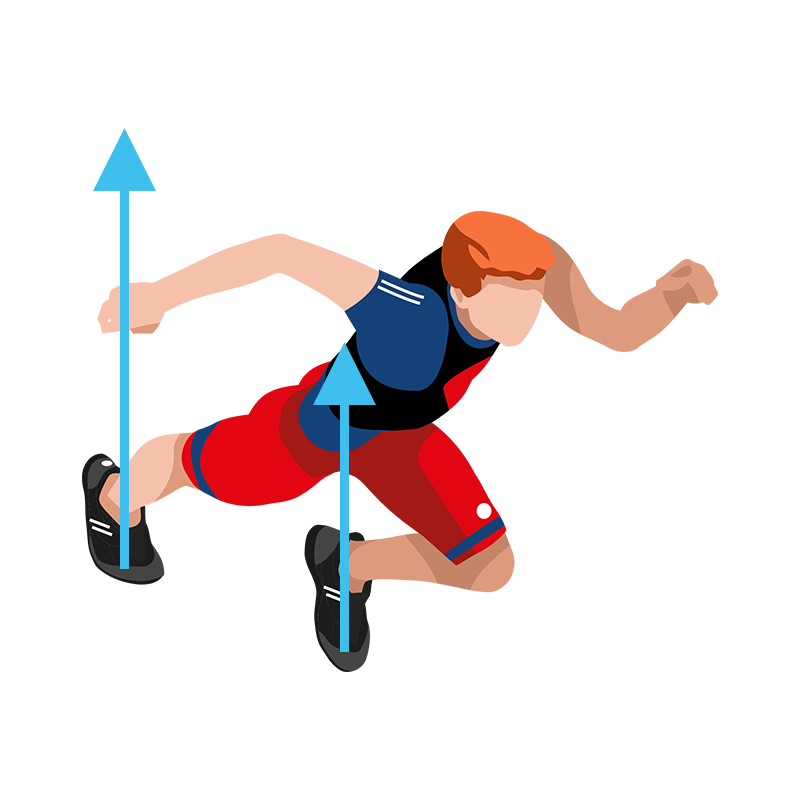
Measuring gait asymmetry is very important for your client. Movement dysfunctions during running and walking can prolong for years with injury (White et al. 2013; Thomson et al. 2018)
Gait asymmetry is clearly linked with energy cost in running gait (Melo et al. 2020)

Give standardized and individualized feedback. Marry your clinical reasoning with cutting edge technology.

A nimble tool that frees up time and space: no clunky cameras, no markers, no calibration.

Level up your screening services by building a scalable program for your community of runners and athletes.
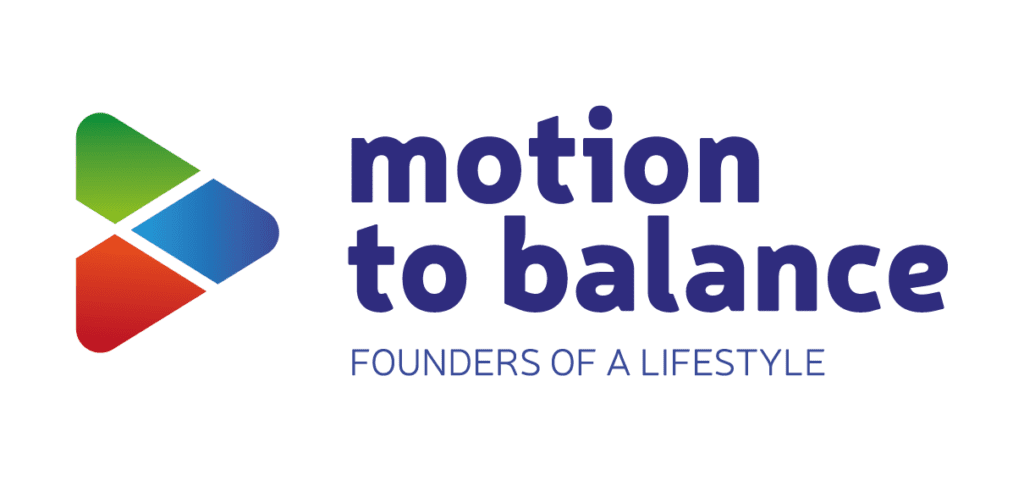
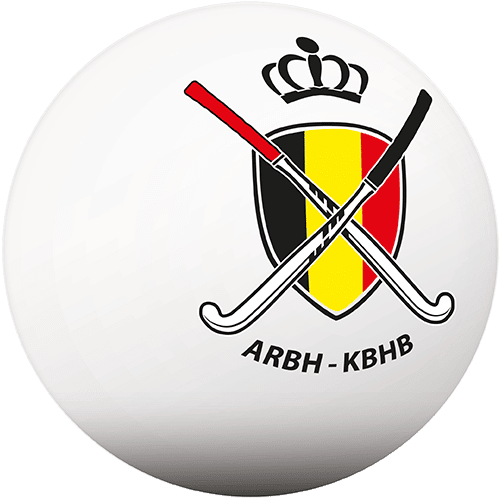

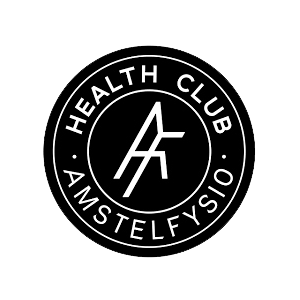
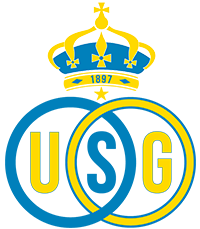

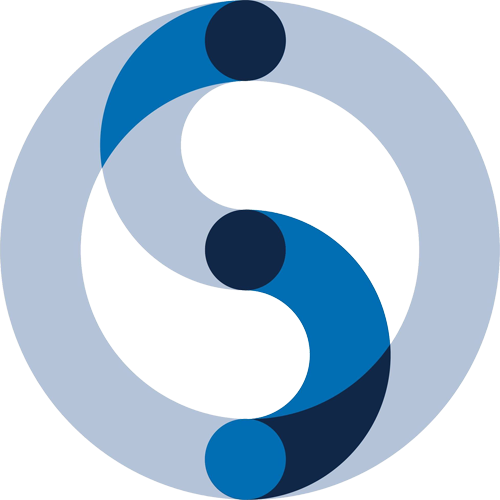
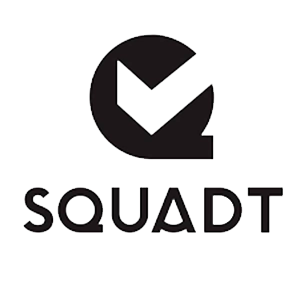



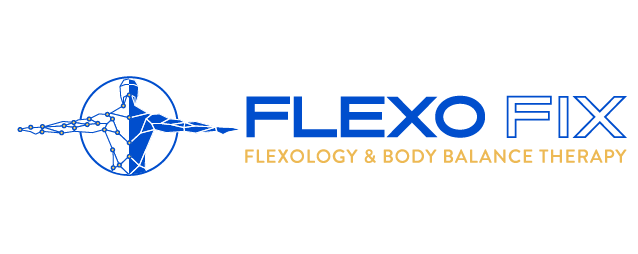

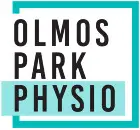
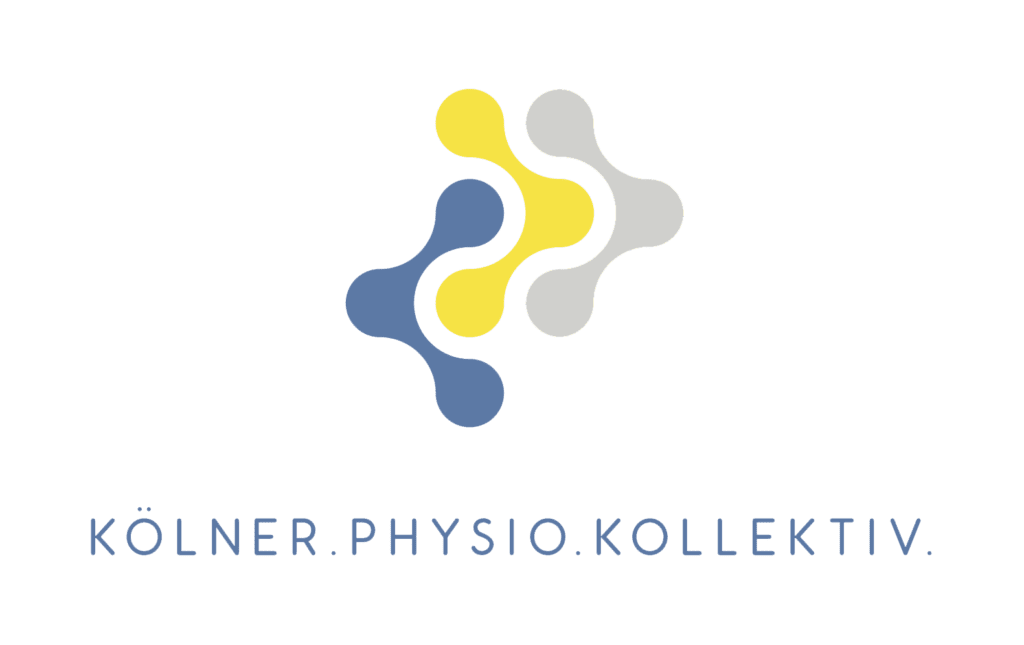

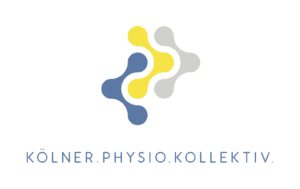



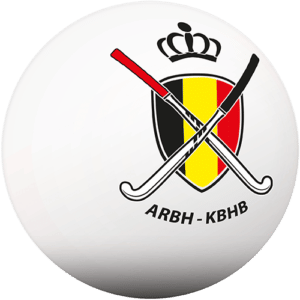



Subscribe to our newsletter for the latest news and valuable insights delivered directly to your inbox!
If you’d like to speak with one of our core team members to discuss possible next steps, book a brief 15 min call. If you’d prefer to go more in detail to learn more about how our gait analysis fits your clinic’s needs, book a 45 min demo.
Real-time gait-retraining can reduce impact by 20% & reduce running-related injuries by 62%(Chan et al. 2017).
Real-time biofeedback only works when the information is simple & intuitive. Visual feedback is a great way to induce positive changes (Agresta et al. 2015).
Use our real-time biofeedback to stimulate corrective actions and promote self-efficacy, motivation, and training adherence.

Recent research showed that running surface and fatigue alternates loading patterns (Schütte et al. 2015; 2016). There is a high need for validated systems to capture data insights in-field (Moore et al. 2019).
With Runeasi, you now can take your running test to the trails, track, or tarmac. Get objective data from the habitual environment of your athletes to give them more relevant and specified insights.
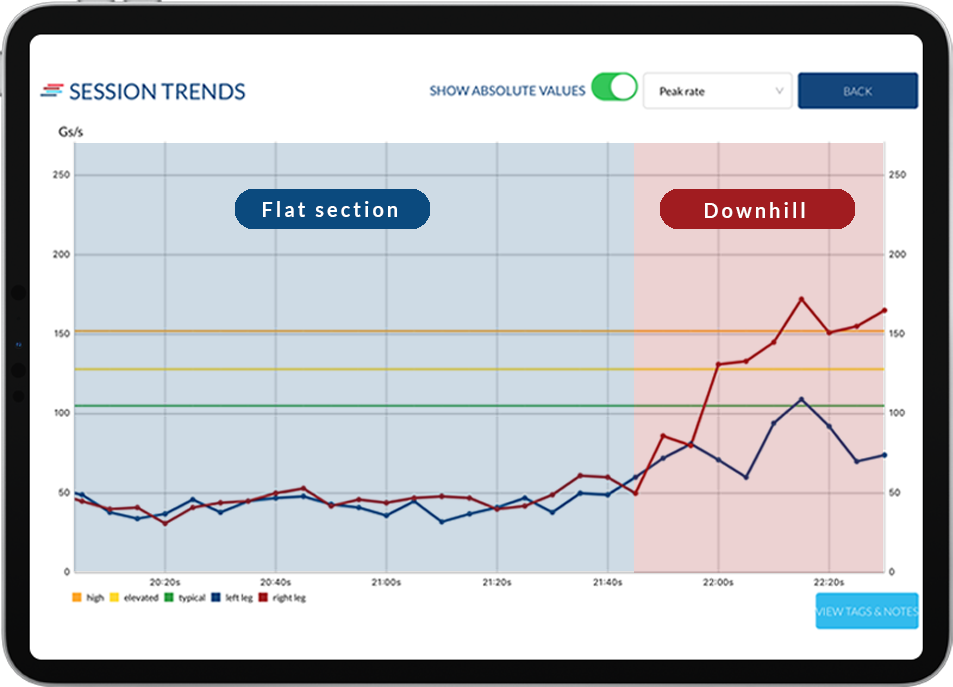
Reduced impact absorption on weak leg (red) during downhill running.
Physiological profiling with lactate- and VO2max tests are currently used to provide optimal training zones. But little is known about the movement quality within these zones.
Enhance your physiological tests with advanced biomechanical insights to create a more holistic picture of your athlete. Learn more about the individual limitations and supplement with additional training interventions to enhance performance and contributing factors to injury-risk.
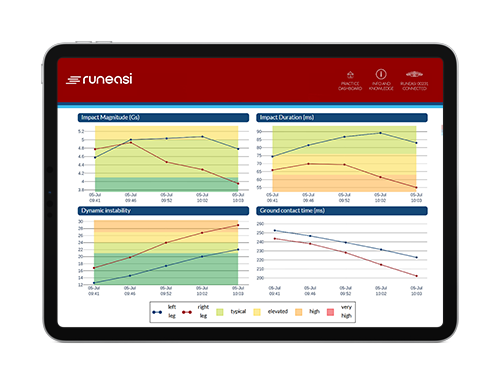


Turn your treadmill into a biomechanics testing lab. Streamline your assessments in under 5 minutes including exportable PDF reports for you clients. Runeasi requires no extra space and is quick and easy to set up. Integrate with your existing 2D analysis to link movement with objective data.
Walking gait asymmetry in early-phase of rehabilitation impairs outcomes after months of rehabilitation (Pietrosimone et al. 2018). It is therefore important to detect movement dysfunctions to get optimal results.
Track progress from week to week with our objective walking assessement. Use real-time feedback to adjust long-lasting movement compensations.
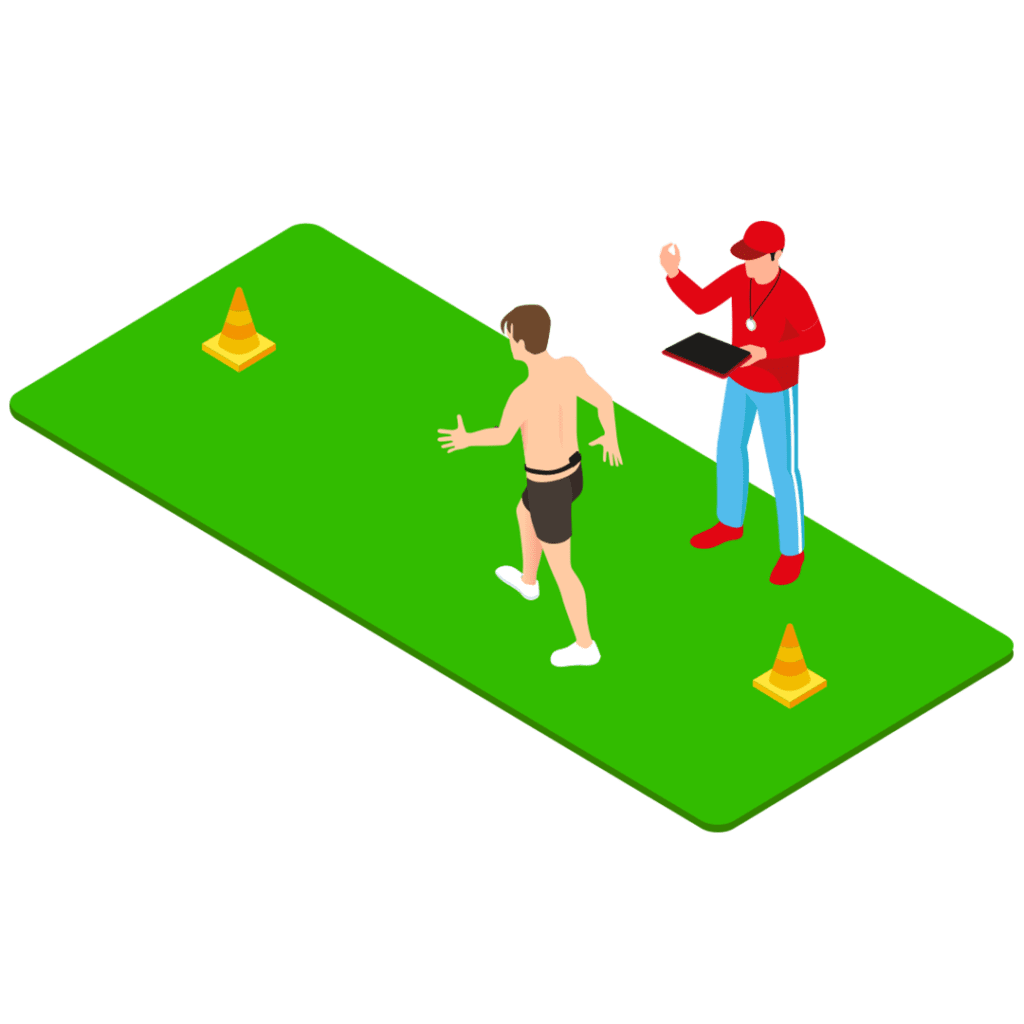
Build biomechanical blueprints to make your players bulletproof.
Progress your players to succeed in their return to sports. Assess readiness for progressing to multi-directional running and return to play. Identify asymmetries that grow when players are pushed at higher velocities.
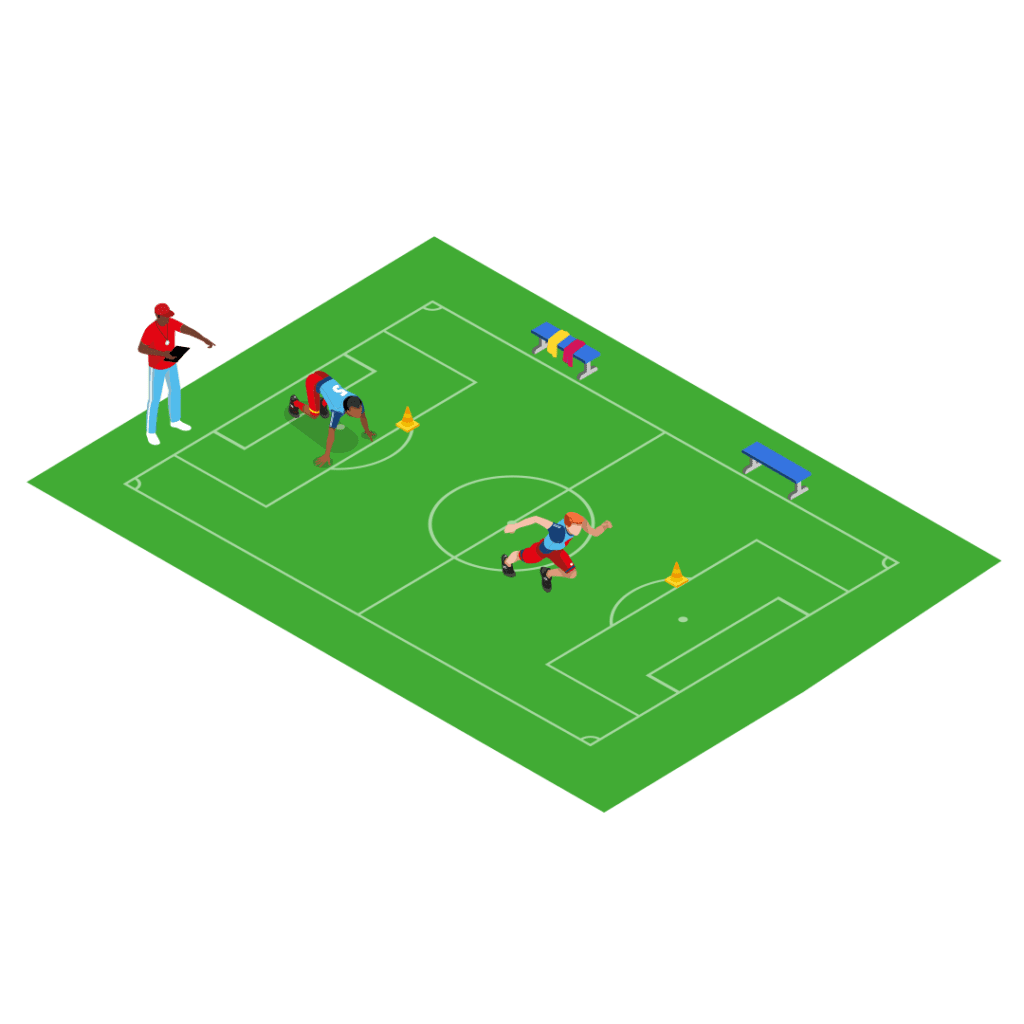



Van objectieve loopanalyse tot gerichte oefentherapie – een introductie
📅 2 april, van 20:00 tot 22:00 uur (CET)
Looptechniek: Zwakke schakels detecteren en optimaliseren m.b.v. real-time feedback.
📅 30 mei, 📍 Fraikinstraat 36, Herentals, België
Transfer van oefentherapie naar de loopbeweging: Van zwakste schakel tot het einddoel van de loper.
📅 30 mei, 📍 Fraikinstraat 36, Herentals, België

WEAKEST LINK:
RELEVANCE:
LINKED TO:
TRAINING:
Ability to control side-to-side movements of the hip
Increased injury-risk & higher energy consumption
Proprioception and ability of the stabilizing muscle groups (ankle/hip) to reduce side-to-side movements.
See Runeasi framework for “Dynamic stability”
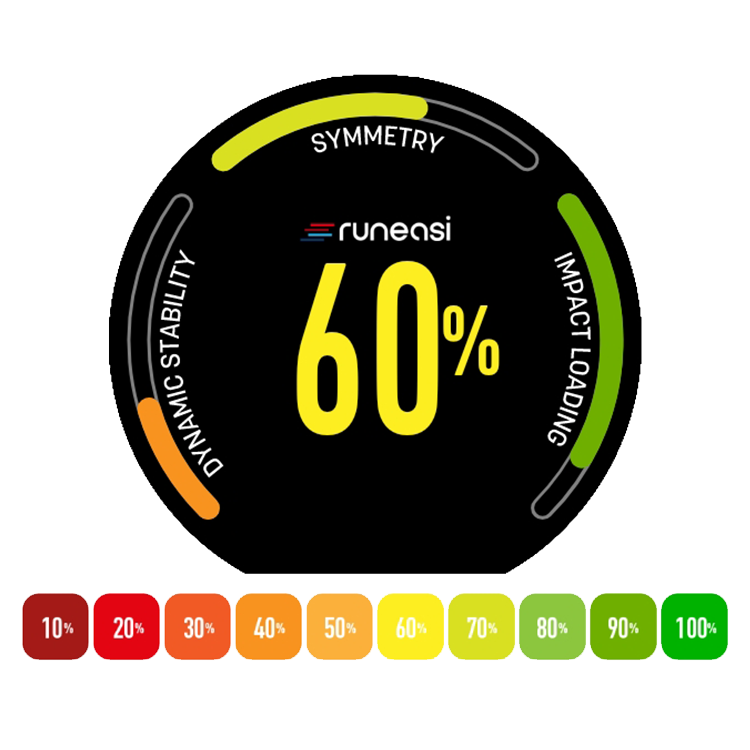
Track and improve your client’s Runeasi running quality. Identify their weakest link with our advanced visualisation.
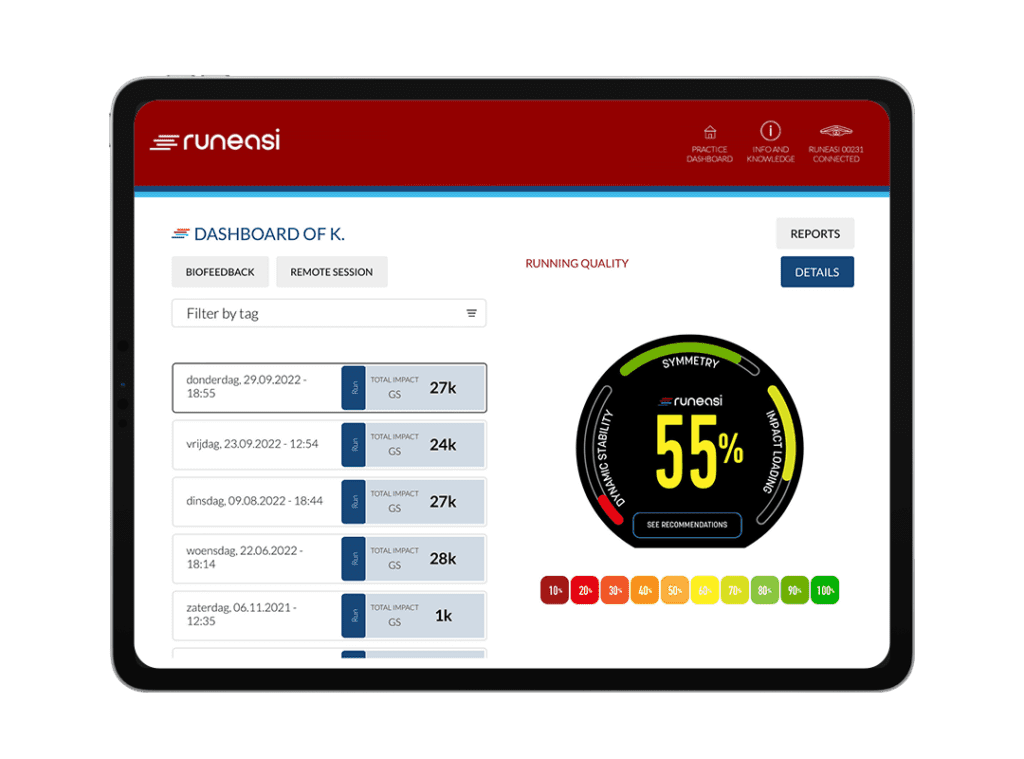
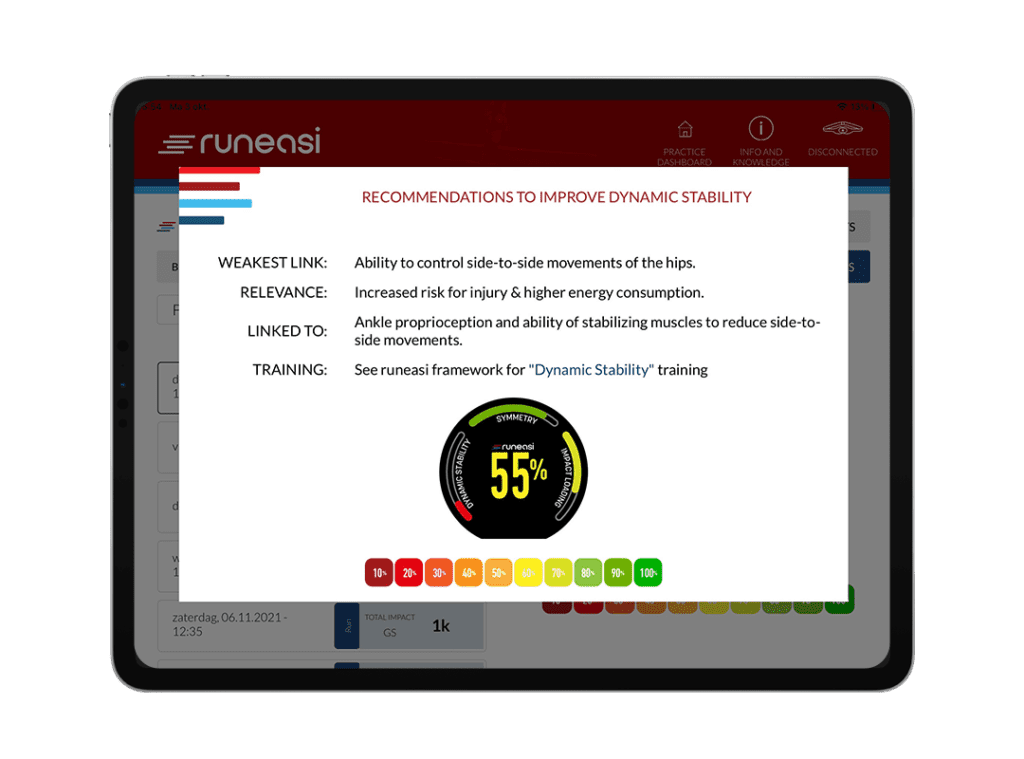
Get individual training and cueing recommendations to improve your client’s weakest link.
Engage your clients through visual gamification and watch how they self-optimize to your verbal cues.
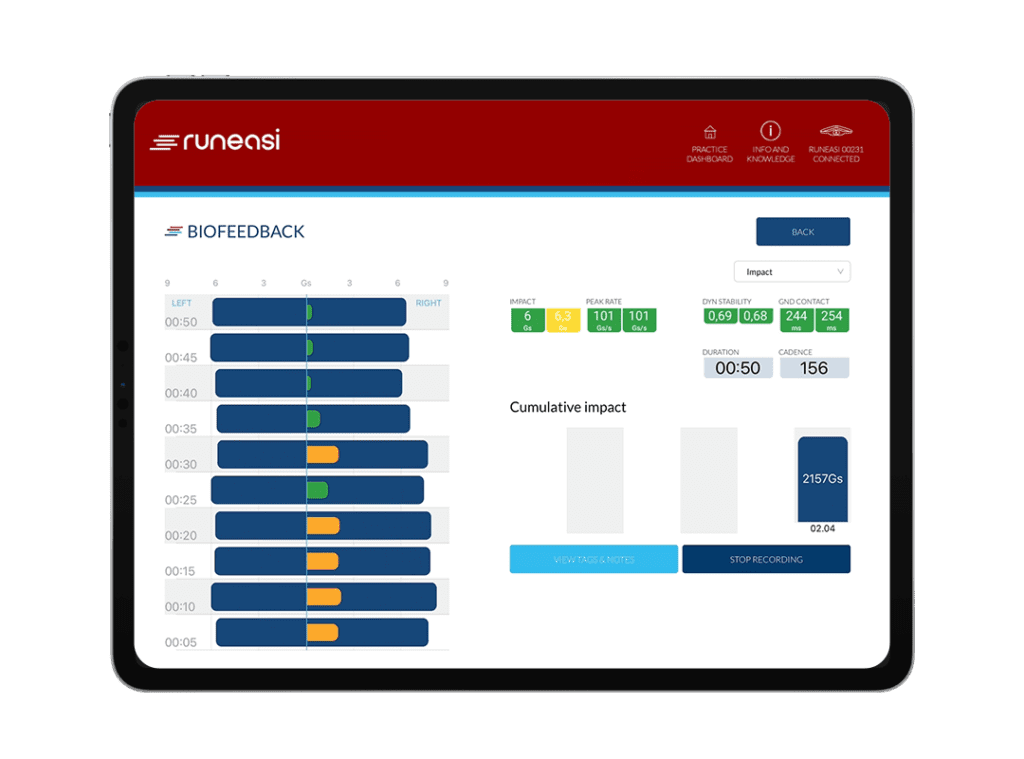
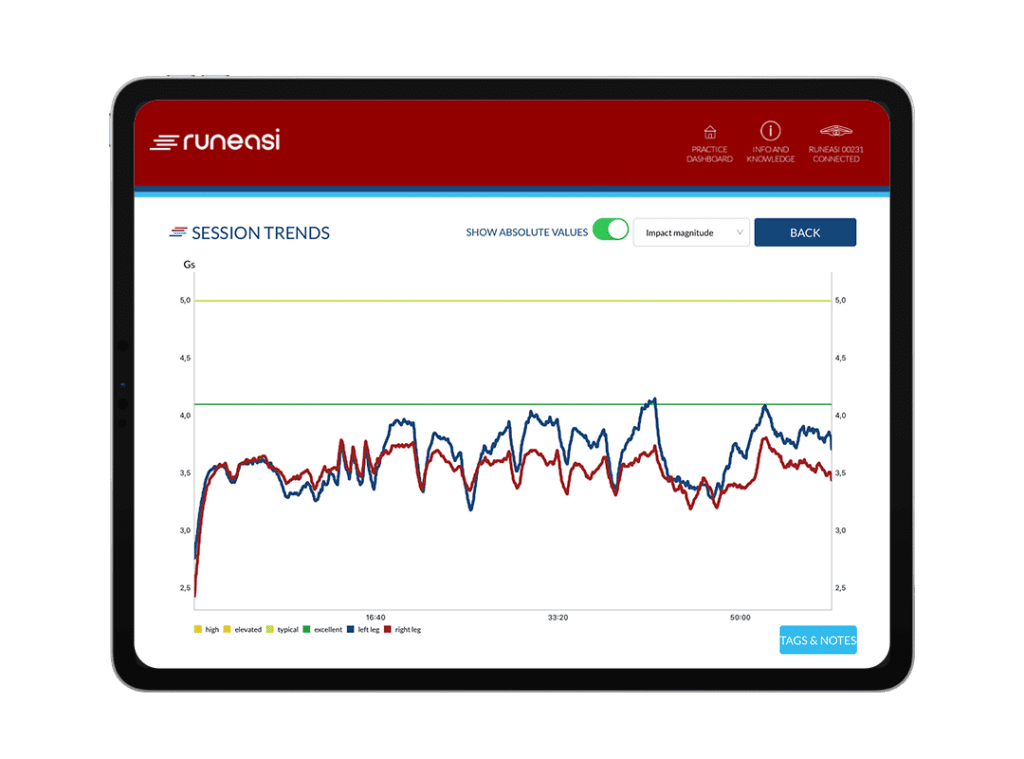
Learn more about your client’s running quality during daily training. Our session trends show when and where the quality drops with fatigue.
Compare pre-post data to show intervention effects on the movement quality.
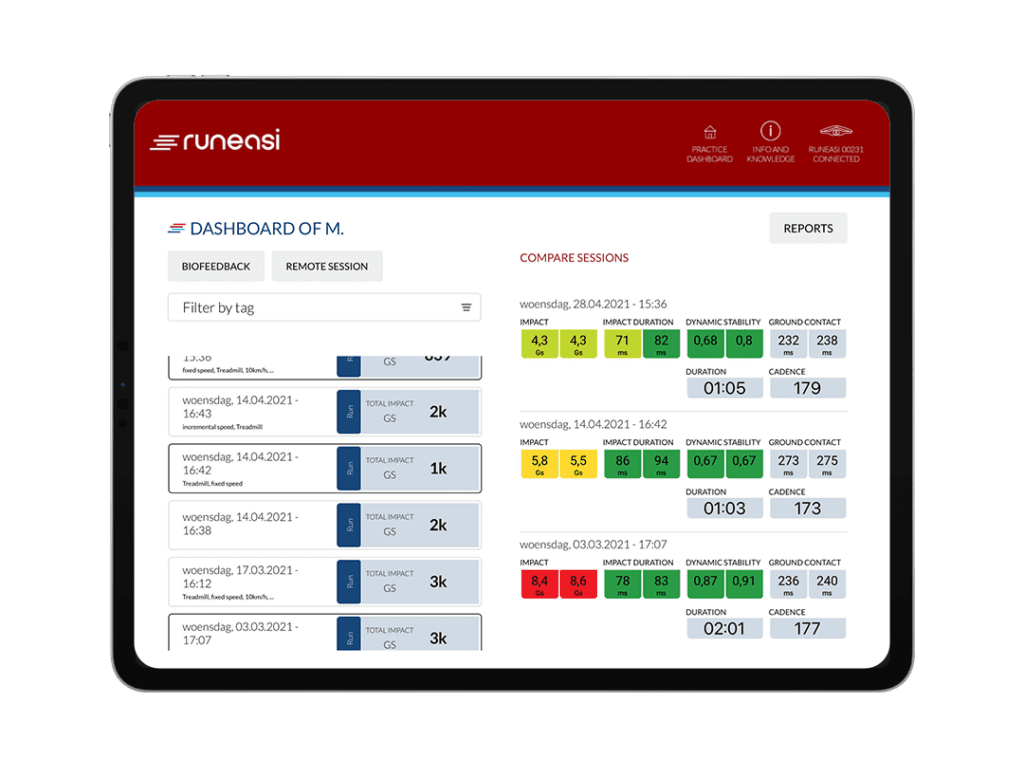
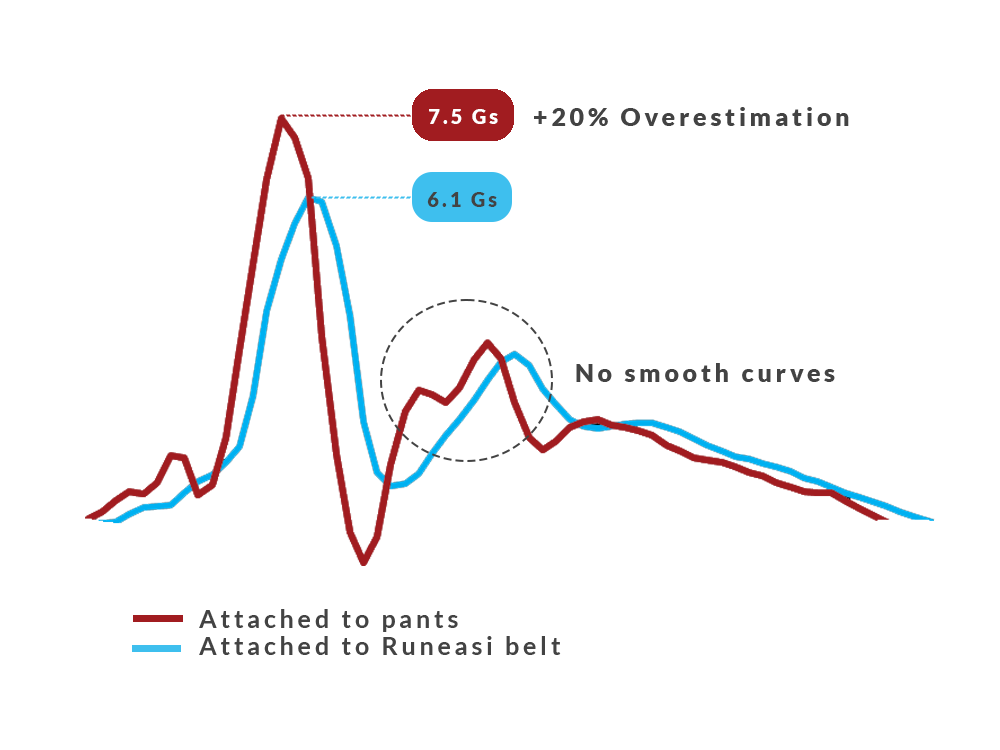
1. No motion artifacts. The Runeasi belt is secured tightly against the body and the skin to capture the actual movements of the body’s center of mass. Attaching or clipping the sensor directly to the pants would allow the sensor to wobble from side to side (i.e., measuring the wobbling of the pants, and not the human body.
2. Easy to standardize the sensor’s positioning. The Runeasi belt makes it easy to consistently position the sensor close to the center of mass. Attaching the sensor directly to the pants would dramatically affect the reliability of the outputs as the height and tightness of the pants will affect the results. Moreover, these pants attachments often shift sideways while running which further decreases the data quality.
Accurately captures full range of motion and kinetic parameters by leveraging wide sensing range (16 Gs) & high sampling frequency (1000 Hz)
Built to withstand high intensity training and sweating. Suitable for the outdoor elements, come rain or shine. Robust to handle the repetitive and ruthless impact shocks of running.
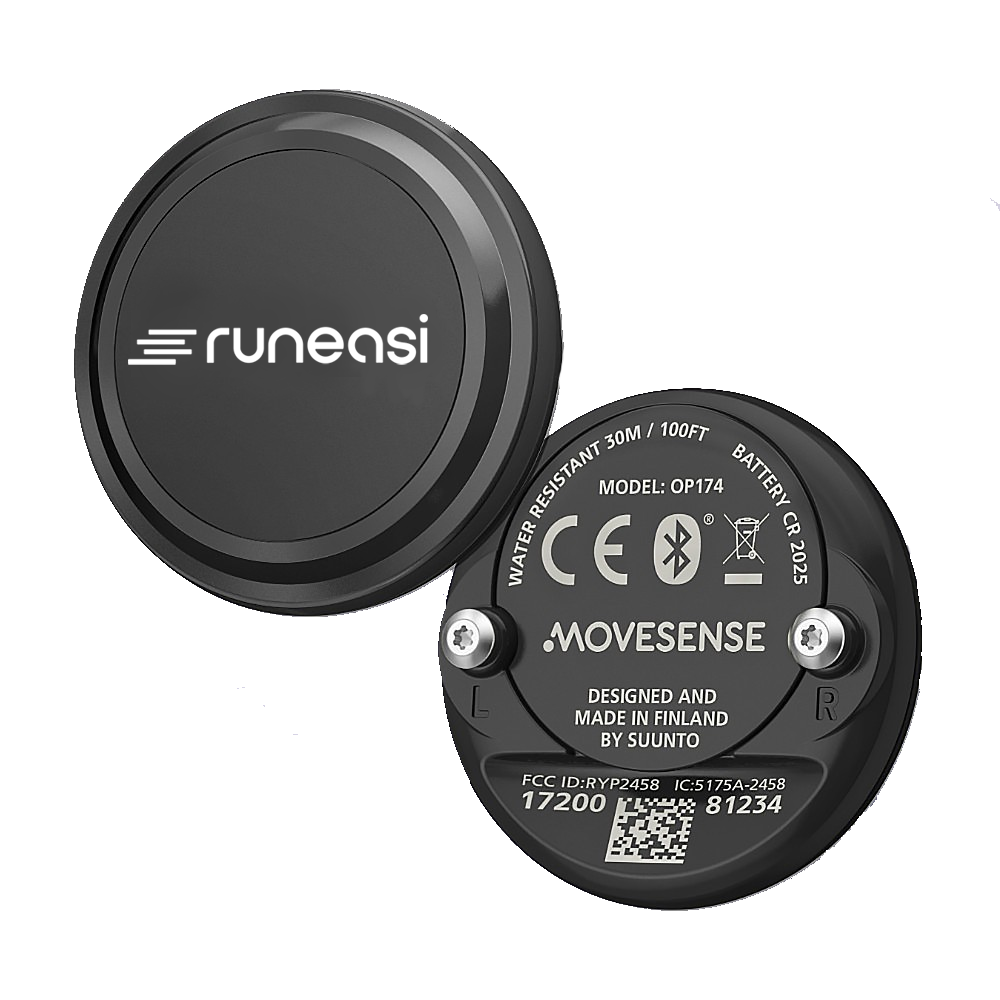
Seamlessly integrates onto the body to support movement without restrictions. Weight: 9.4g/0.33oz with battery. Dimensions (36.6mm/1.44” dia. X 10.6mm/ 0.42” thick)
Replaceable coin-cell battery with operating time up to months, depending on the usage. Bluetooth® 5.0 radio for effortlessly transmitting data real-time or post-session.